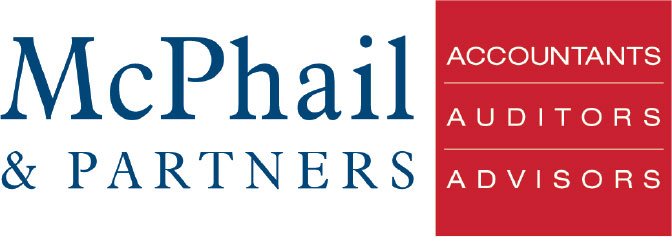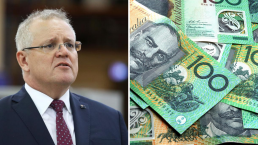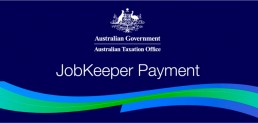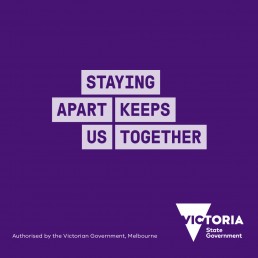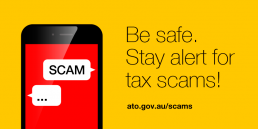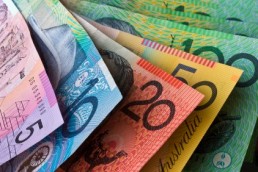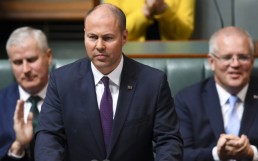PM announces pandemic leave disaster payment for Victoria
Prime Minister Scott Morrison announced on 3 August 2020 a Federal Government “pandemic leave disaster payment”. The payment will be a one-off amount of $1,500, available to workers in Victoria who have no sick leave available who have to self-isolate for 14 days as a result of an instruction by a public health officer.
It will only apply to workers in Victoria, where the Government has declared a “state of disaster” and imposed Stage 4 lockdowns, which are expected at this point to run until mid-September.
The Victorian Government has already announced that it will provide a disaster payment, principally made to those on short-term visas; that is, those who are not permanent residents or citizens of Australia who otherwise wouldn’t have accessed Commonwealth payments. The Federal Government will provide its payment to those who fall outside that scope and who don’t have leave available to them because it has been used up.
Accessing the Federal Government payment
Services Australia has provided further details on its website. It states that, to get this payment, the applicant must:
- be at least 17 years old;
- live in Victoria; and
- have no income from paid work, including sick leave entitlements.
In addition, the Victorian Department of Health and Human Services must also have told the applicant to self-isolate or quarantine. They must have done this because the applicant:
- has COVID-19;
- has been in close contact with a person who has COVID-19;
- cares for a child, aged 16 years and under, who has COVID-19; and/or
- cares for a child, aged 16 years and under, who has been in close contact with a person who has COVID-19.
If a person has to self-isolate more than once, they can claim this payment each time. However, a person cannot get this payment if they already receive:
- an income support payment, ABSTUDY Living Allowance, Paid Parental Leave or Dad and Partner Pay;
- the JobKeeper payment; or
- the Victorian Coronavirus (COVID-19) Worker Support Payment.
Coronavirus Worker Supplement Payment (Victoria)
The Victorian Government announced its Coronavirus Worker Supplement Payment on 30 July. To be eligible for a one-off $1,500 Coronavirus (COVID-19) Worker Support payment, the claimant must have been instructed by the Department of Health and Human Services:
- to self-isolate or quarantine at home because they are either diagnosed with coronavirus (COVID-19) or are a close contact of a confirmed case; or
- that a child aged aged under 16 in the claimant’s care needs to self-isolate or quarantine at home because they are either diagnosed with coronavirus (COVID-19) or are a close contact of a confirmed case.
To receive the payment, the claimant must:
- be 17 years and over;
- be currently living in Victoria (including people on Temporary Protection Visas and Temporary Working Visas 457 and 482);
- be likely to have worked during the period of self-isolation or quarantine and are unable to work as a result of the requirement to stay at home;
- not be receiving any income, earnings or salary maintenance from work;
- have exhausted sick leave entitlements, including any special pandemic leave; and
- not be receiving the JobKeeper payment or other forms of Australian Government income support.
There is no requirement for a claimant to be a citizen or permanent resident to be eligible for the Victorian Government payment.
JobKeeper reference date now 1 July 2020
For JobKeeper fortnights beginning on or after 3 August 2020, the reference date for determining certain employee eligibility conditions has been changed from 1 March 2020 to 1 July 2020. The purpose of this change is to extend the scope of JobKeeper so that “it also benefits employers of more recently engaged employees”.
Importantly, the changed rules preserve the existing eligibility of employees for JobKeeper payments; that is, those for whom employers are currently receiving JobKeeper, termed “1 March 2020 employees” because they satisfied the rules as at that date.
As a result, for JobKeeper fortnights beginning on or after 3 August 2020, an individual can be an eligible employee if they:
- meet the eligibility requirements with reference to the new 1 July 2020 date; or
- qualify as a 1 March 2020 employee.
Newly eligible employees
The later reference date provides the opportunity for qualifying employers to access JobKeeper for those employees who they engaged after 1 March 2020 and who were in an employment relationship as at 1 July 2020. That is, for new employees engaged after 1 March.
The changes also allow employers to qualify for JobKeeper payments for those employees who do not qualify as 1 March 2020 employees, but became eligible by meeting the conditions under the new 1 July 2020 reference date.
Existing and re-employed employees
The amending rules make no changes to the existing eligibility of employees who are already covered by JobKeeper; that is, those for whom the employer has been receiving the benefit based on their status as at 1 March 2020. In other words, eligible 1 March 2020 employees do not need to retest (and potentially lose) their eligibility for their employer due to the introduction of the 1 July 2020 date, or satisfy any new nomination requirements.
Although employees do not qualify as 1 March 2020 employees if their employment has ceased since 1 March, they may qualify for JobKeeper if they are engaged by another employer as at 1 July 2020. Further, if 1 March 2020 employees are made redundant by an employer and are later re-employed by the same employer (including after 1 July 2020), there is scope for them to qualify without further testing.
Employer obligations
Employers that are already participating in the JobKeeper program are required to give a notice to all employees about the revised JobKeeper reference date, other than:
- employees to whom the employer has previously given a notice in writing advising that the employer has elected to participate in the JobKeeper scheme;
- employees who had previous provided the employer with a nomination form in relation to the JobKeeper scheme;
- individuals who the employer reasonably believes do not satisfy the 1 July 2020 requirements; and
- employers that are ACNC-registered charities that have elected to disregard certain government and related supplies and the individual’s wages and benefits are funded from such government and related sources.
Further, to be eligible for the JobKeeper payment for any newly eligible employees under the 1 July 2020 reference date, a qualifying employer must provide notice to the ATO of information about that employee and their nomination. Where an employer has provided this notification to the ATO for entitlement to receive JobKeeper payments in respect of the eligible employee, the employer must notify the employee within seven days.
For those employers entering JobKeeper for the first time, the notification requirement will apply to all of their employees.
JobKeeper changes: turnover test and employment start date
Prime Minister Scott Morrison announced further changes to JobKeeper on 7 August 2020. The changes are intended to ensure that eligibility for the revised JobKeeper scheme – to commence on 28 September 2020 – will be based on a single quarter tax period, rather than multiple quarters as previously announced. Employees hired as at 1 July 2020 will now also be eligible to receive JobKeeper.
Treasury has updated its JobKeeper factsheets as at 7 August 2020 to incorporate the PM’s announcements.
The JobKeeper rules implemented in March 2020 in response to the COVID-19 pandemic were due to finish on 27 September 2020. The Government then announced on 21 July 2020 that the scheme would be extended for six months (until 28 March 2021), in an amended form.
The key highlights of JobKeeper Version 2 – to start on 28 September – are that:
- the extended scheme will apply at a top rate of $1,200 per employee (down from the current $1,500) per JobKeeper fortnight from 28 September 2020 until 3 January 2021, then drop to $1,000 until 28 March 2021;
- lower rates will apply for part-time and casual employees; and
- businesses will be required to re-test their eligibility for the payment scheme to access the extension.
Changes to turnover test
The latest changes relate to the eligibility test announced in JobKeeper Version 2.
JobKeeper Version 2 originally required that, from 28 September 2020, businesses and not-for-profits seeking to claim JobKeeper payments would have to meet a further decline in turnover test for each of the two periods of extension, as well as meeting the other existing eligibility requirements. That is, at that time businesses would have been required to reassess their eligibility for the JobKeeper extension with reference to their actual turnover in the June and September quarters 2020.
The PM has eased the proposed changes to turnover tests for businesses Australia-wide.
The changes mean that businesses will now only be required to show the requisite actual decline in turnover for the September quarter, rather than for both the June and September quarters. Similarly, businesses will only need to demonstrate a decline in turnover for the December 2020 quarter, rather than each of the June, September and December 2020 quarters.
Changes to McPhail & Partners operations during current Stage 3 lockdown
With Victoria again entering Stage 3 lockdown in the ongoing battle against COVID-19 we have implemented a number of changes to our operations to ensure the safety of our staff, clients and community whilst still remaining fully operational.
Office Closure and Remote Working
As per the Victorian Government guidelines, all staff that are able to work from home are now working remotely from home. Whilst the team is physically separated we are in constant communication and all have full access to the McPhail’s system so we can continue to provide our full service offering to you, our clients.
We are hopeful the current Stage 3 lockdown will only last for the 6 weeks originally announced however, we will continue to follow the directions of the Victorian Government as more information becomes available.
In light of the current restrictions, no physical client meetings will be held at the McPhail & Partners offices until further notice.
The team will still be available during normal office hours (8:30am - 5:00pm Mon-Fri) and can be contacted by the following methods:
- Phone – the main office number is 9898 9221 and your calls can be transferred to the relevant team member
- Email – either directly with one or our team members of to office@mcphail.com.au
- Zoom – phone or email us to book a Zoom call
Exchange of Documents
With the 2020 financial year now ended, we know many of you are keen to get your tax returns and financial statements prepared. With the team working remotely, we ask that where possible you provide your source documents electronically to avoid any unnecessary delays.
We can accept documents via Email however if your records contain sensitive information such as TFNs or HIN/SRN references for shareholdings we have 2 secure online portals available that can be used.
Both the MYOB Client Portal (also used for electronic tax return approval) and Secure Returns can be accessed from our website at https://www.mcphailandpartners.com.au/client-login/.
If you aren’t already setup on one of these portals please contact us to arrange a new user setup.
We understand that not all clients will be able to utilise these online systems so our PO Box (PO Box 40, Mitcham, VIC 3132) will still be monitored if mailing your records is required.
We ask that records not be left unattended at the office. If none of the options above are suitable to you please call us on 9898 9221 so we can make alternate arrangements.
Approval of Documents
As much as possible we would like to utilise our electronic portals and email to provide completed tax returns and financial statements for review and approval. These systems provide a much more efficient turnaround time and don’t require any of our team to be physically in the office to print and mail out documents.
The team here at McPhails can discuss these alternatives with you as needed to ensure we can find the right option for each of you.
We thank you for your ongoing support, understanding and patience through these challenging times. If you wish to discuss any of these changes further please do not hesitate to contact the office on 9898 9221.
ATO scam calls may soon be a thing of the past
Last year, some 107,000 ATO impersonation scam calls were reported to the authorities. The real number is likely to be much higher, given that most of these type of calls go unreported. Scammers are increasingly using technological advances to appear more legitimate and nab unsuspecting victims.
One technique commonly used is “spoofing”, where scammers use software to mislead the caller ID technology on mobile phones and modern fixed line phones. Rather than transmitting the actual, typically overseas, phone number the call is coming from, the software “overstamps” it with another phone number. Commonly, the numbers used are widely publicised, such as the legitimate numbers used by the ATO.
Tip: The ATO has recently alerted the community to an SMS scam which claims that you’re due to receive a tax refund and asks you to click on a link. The ATO will never send an email or SMS asking people to access online services via a hyperlink.
Due to the prevalence of these scams and the large amount of money lost by individuals, Australian telcos, the ATO and the Australian Communications and Media Authority (ACMA) recently collaborated on a three-month trial of technology to block scam calls appearing to originate from legitimate ATO phone numbers. Under the Scam Technology Project, participating telcos used software to identify calls which had been “overstamped” with specified ATO phone numbers and blocked them.
According to the government, the trial has been “highly successful” in blocking spoof calls from specified ATO numbers. While this blocking technology will not stop scammers randomly ringing Australians pretending to be from the ATO, it will stop specific ATO numbers appearing in the caller ID on the recipient’s phone, making the scam seem less convincing.
Tip: If you receive a call from someone who says they are from a government department, such as the ATO, but you’re not sure whether the call’s legitimate, the best course of action is to hang up and phone back on a widely publicised number from an official website or source.
Additional cash flow boost coming for businesses
If your business is one of many that received the initial cash flow boosts as a part of the government’s COVID-19 economic stimulus measures, prepare for more help coming your way. When you lodge your monthly or quarterly activity statements for June to September 2020, your business will receive additional cash flow boosts.
Generally, the additional amount will be equal to the total amount that you initially received and will be split evenly between the lodged activity statements. Quarterly payers will generally receive 50% of their total initial cash flow boost for each activity statement, while monthly payers will generally receive 25% of their total initial cash flow boost for each activity statement.
However, if you’ve made adjustments or revised your activity statements after lodgment, the amount of additional cash flow boost payments you receive may be different.
Remember, if you haven’t made payments to employees subject to withholding, you need to report zero for PAYG withholding when lodging your activity statements to ensure you receive the additional cash flow boost payments. It’s important that you don’t cancel PAYG withholding registration until you have received the additional cash flow boosts.
Expanded instant asset write-off for businesses
If you’ve purchased assets for your business, remember that you may be eligible to claim an immediate deduction under the instant asset write-off, which was recently expanded.
From 12 March to 30 June 2020 inclusive, the instant asset write-off threshold for each asset increased to $150,000 (up from $30,000) for business entities with aggregated annual turnover of less than $500 million (up from $50 million).
To get it right, remember:
- check if your business is eligible;
- both new and secondhand assets can be claimed, as long as each asset costs less than $150,000;
- assets must be first used or installed ready for use between 12 March and 30 June 2020;
- a car limit applies for passenger vehicles;
- if the asset is for business and private use, only the business portion can be claimed;
- you can claim a deduction for the balance of a small business pool if its value is less than $150,000 at 30 June 2020 (before applying depreciation deductions); and
- different eligibility criteria and thresholds apply to assets first used or installed ready for use before 12 March 2020.
Tax time 2020 is here
Don’t jump the gun and lodge too early
Tax time 2020 is here, but it’s likely to be anything but routine. Many individuals on reduced income or have increased deductions may be eager to lodge their income tax returns early to get their hands on a refund. However, the ATO has issued a warning against lodging too early, before all your income information becomes available. It’s important to remember that employers have until the end of July to electronically finalise your income statement, and the same timeframe applies for other information from banks, health funds and government agencies.
For most people, income statements have replaced payment summaries. So, instead of receiving a payment summary from each employer, your income statements will be finalised electronically and the information provided directly to the ATO. Your income statements can be accessed through myGov and the information is automatically included in your tax return if you use myTax.
Tip: Tax agents can also access this information, and we’re here to help you get your return right this year.
Although you may be eager to lodge as soon as possible, the ATO has warned against lodging too early, as much of the information on your income may not be confirmed until later. It’s generally important to wait until income statements are finalised before lodging a tax return to avoid either delays in processing or a tax bill later on. Your income statement will be marked “tax ready” on myGov when it’s finalised, and other information from banks, health funds and government agencies will be automatically inserted into your tax return when it’s ready towards the end of July.
If you still choose to lodge early, the ATO advises carefully reviewing any information that’s pre-filled so you can confirm it’s correct. When lodging early you’ll
also have to formally acknowledge that your employer(s) may later finalise income statements with different amounts, meaning you may need to amend your tax return and additional tax may apply.
Tax return tips
With the great disruptors of the Australian bushfires and the global coronavirus (COVID-19) pandemic, and the associated government economic stimulus measures, there are some key tax-related matters for everyone to be aware of this year.
The ATO has a range of approaches to support taxpayers through tax time 2020, especially where new circumstances mean you might be receiving a different type of income or be able to claim new deductions. The ATO’s Tax Time Essentials page (www.ato.gov.au/taxessentials) provides a one-stop-shop for the things that are a little different this year and how they impact tax returns.
People accessing super early as a part of the COVID-19 early release scheme can rest assured that this money will not form a part of their assessable income. To date, 1.98 million people have withdrawn an average of $7,475 from their super under the scheme.
Another key difference this year is the introduction of the optional simplified method for claiming work from home expense deductions. This method allows you to claim 80 cents for each hour you worked from home from 1 March 2020 to 30 June 2020, to cover all deductible expenses. However, if you were working from home before 1 March 2020 or have documented actual expenses that work out to be more than 80 cents per hour you can still use the usual method to claim expenses related to working from home.
If you were unable to work from home and had to take leave or were temporarily stood down, if your employer made any kind of payment, either regular or one-off, those amounts will need to be declared as wages and salary on your return and tax will apply at your usual marginal rates. This applies regardless of whether the payments are funded by the government JobKeeper scheme.
If you’ve been made redundant or had your employment terminated, any payment you receive may consist of a tax-free portion and a concessionally taxed portion, which means that you could potentially pay less tax.
ATO opens applications for early release of super
The ATO has released its application form for the early release of superannuation by individuals impacted by COVID-19. From 20 April, an individual can make one application to access up to $10,000 of their super (tax-free) in the 2019–2020 financial year, and a second application for up to $10,000 in the 2020–2021 year until 24 September 2020.
TIP: The ATO has run a social media campaign asking people to observe the intention of the legislation and only apply to release their super to deal with the adverse economic effects of COVID-19. You should not withdraw your super early and recontribute it to gain a personal tax deduction.
If you are eligible, you should carefully check your super account balances to ensure there are sufficient funds available to claim. If you make an application and the fund has insufficient money to fulfil the application, you will not be able to make a second application for the balance from another fund/account in that financial year or ask for an amount above the $10,000 cap in the 2020–2021 financial year.
It take one to two business days for super funds to receive notifications directly from the ATO about their members. The government then expects funds to process the payments and release the amounts to individuals “as soon as possible”.
If your application is rejected by the ATO, you will be notified via your MyGov account in two to three days.
Separate arrangements apply for applications by members of self managed super funds (SMSFs). The ATO will issue a determination to you as the fund member (instead of to the super fund) advising of your eligibility to release an amount. When the SMSF receives the determination from you, the SMSF trustee is then authorised to make the payment.
Federal Budget night shifts to 6 October 2020
The Australian Government recently announced that this year’s Federal Budget will not be handed down until 6 October 2020. In making the announcement, Treasurer Josh Frydenberg said that this postponement is intended to “provide more time for the economic and fiscal impacts of the coronavirus, both in Australia and around the world, to be better understood”.
Since 1994, with a few exceptions, Australia’s Federal Budget has been handed down by the Treasurer on the second Tuesday in May. Exceptions were made in 1996, when an election and a change of government occurred in March and the Budget was handed down in August; in 2016, when the Budget was handed down on the first Tuesday in May because the government was considering calling call a double dissolution election; and most recently in 2019, when a Federal election was called for 18 May and the Budget was presented on 2 April.
Between 1901 and 1993 the Budget was presented in August, on the first Tuesday night of Parliament’s spring session.
